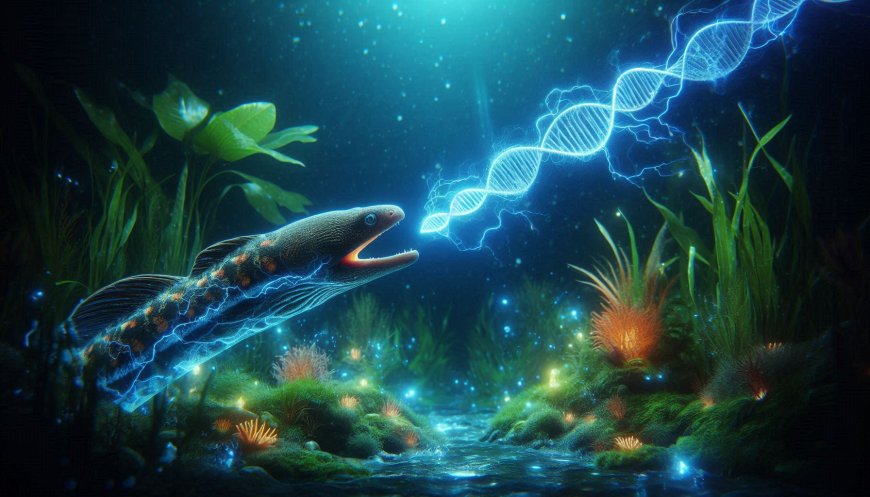The Electrifying Power of Nature: How Electric Eels Can Alter Genetic Codes
Explore the electrifying power of nature as electric eels demonstrate the potential to influence genetic codes. Discover how these remarkable creatures use high-voltage pulses to alter biological pathways in stunning underwater scenes.

In the murky rivers of the Amazon, electric eels have long been known for their shocking abilities—literally. But recent research from Nagoya University in Japan has uncovered an even more astonishing trait: these aquatic powerhouses may be capable of altering the genetic makeup of other organisms in their environment. This groundbreaking discovery reveals that electric eels, through their powerful discharges, could naturally trigger a process called electroporation, a phenomenon typically associated with high-tech laboratories.
Electroporation: A Natural Genetic Transformer?
Electroporation is a well-known technique in molecular biology labs. By applying an electric field to cells, scientists create tiny, temporary pores in the cell membrane, allowing molecules like DNA or proteins to slip inside. This method is crucial for genetic engineering, enabling scientists to introduce new genes into cells. But until now, it was believed that electroporation could only occur under controlled conditions—high-tech equipment, precise measurements, and sterile environments. However, the research at Nagoya University challenges this assumption by suggesting that nature, too, might have its own version of this genetic transformation process.
Electric Eels: From Riverbanks to Genetic Engineers
In their experiment, the researchers exposed young fish larvae to a solution containing specially marked DNA, designed to glow if successfully transferred into the larvae’s cells. Then came the electrifying part—introducing an electric eel to the environment. As the eel discharged its signature shock while feeding, the researchers observed a remarkable phenomenon: approximately 5% of the larvae showed signs of successful gene transfer.
Assistant Professor Iida, one of the study’s leading researchers, had long suspected that electroporation could occur in nature. "The Amazon’s electric eels may serve as natural power sources," he explained. "Their electric discharges might cause genetic modifications in other organisms through environmental DNA and the electric field they generate."
This discovery is revolutionary. It suggests that what we once thought was a man-made process could be happening right under our noses—or in this case, in the rivers and streams inhabited by electric eels.
The Implications: A Natural Pathway for Genetic Change
While electric eels have always captivated scientists with their ability to generate powerful electric shocks, their role as potential natural gene editors is a stunning new revelation. This opens the door to a whole new understanding of how electric fields in nature could influence the genetics of living organisms. In addition to electric eels, other natural electric phenomena—like lightning—have been shown to affect microorganisms like nematodes and soil bacteria, providing further evidence that nature may be quietly conducting genetic experiments of its own.
A New Frontier in Science
Professor Iida and his team are excited about the implications of their findings. “Nature holds complexities we are only beginning to understand,” Iida says. “By studying unconventional ideas, we can uncover groundbreaking biological phenomena.”
The possibilities seem endless. Could natural electroporation be a tool for evolution, subtly shaping the genetics of species in electric environments over millennia? Could we harness this power for medical advancements, using electric fields to safely and efficiently edit genes in the human body?
This research also highlights how nature often mirrors processes that we’ve artificially recreated in labs, hinting at solutions that are already built into the natural world. The discovery that electric eels may act as agents of natural gene editing is a testament to the ingenuity of the planet’s ecosystems, constantly surprising us with their complexity and potential.
The Future: Nature’s Role in Genetic Engineering
As we push the boundaries of genetic engineering, this study from Nagoya University encourages us to look more closely at the world around us. Electric eels may be just the tip of the iceberg when it comes to natural electroporation, suggesting that nature itself might hold the key to future scientific and medical breakthroughs. In the grand symphony of life, it seems that even the hum of electricity, delivered through a shocking jolt, could play a pivotal role in shaping the very DNA of our world.
What's Your Reaction?








































































































